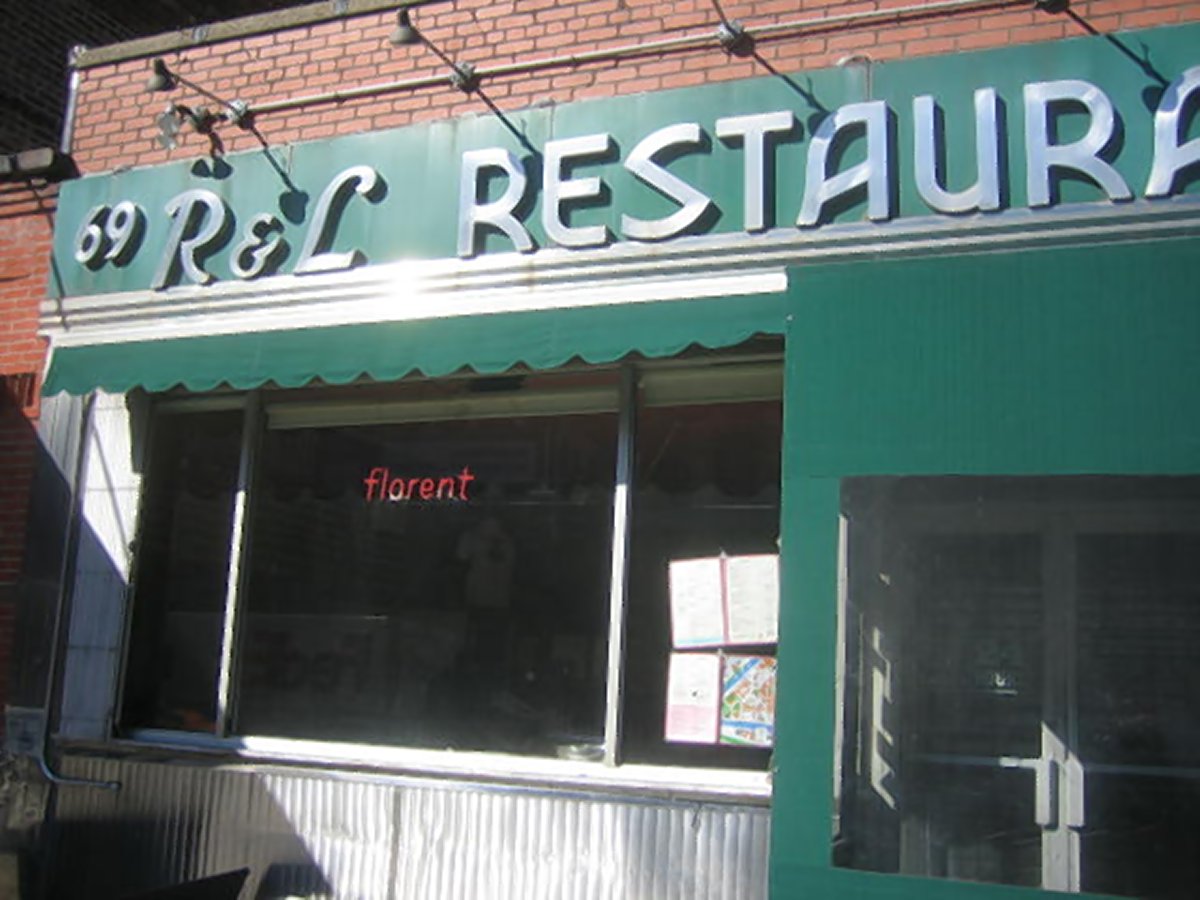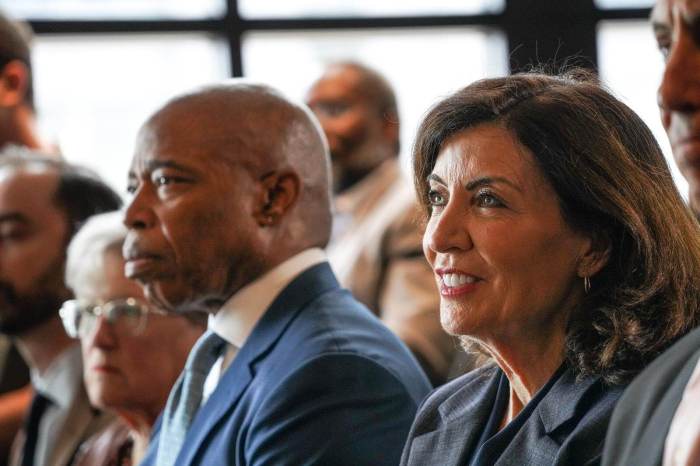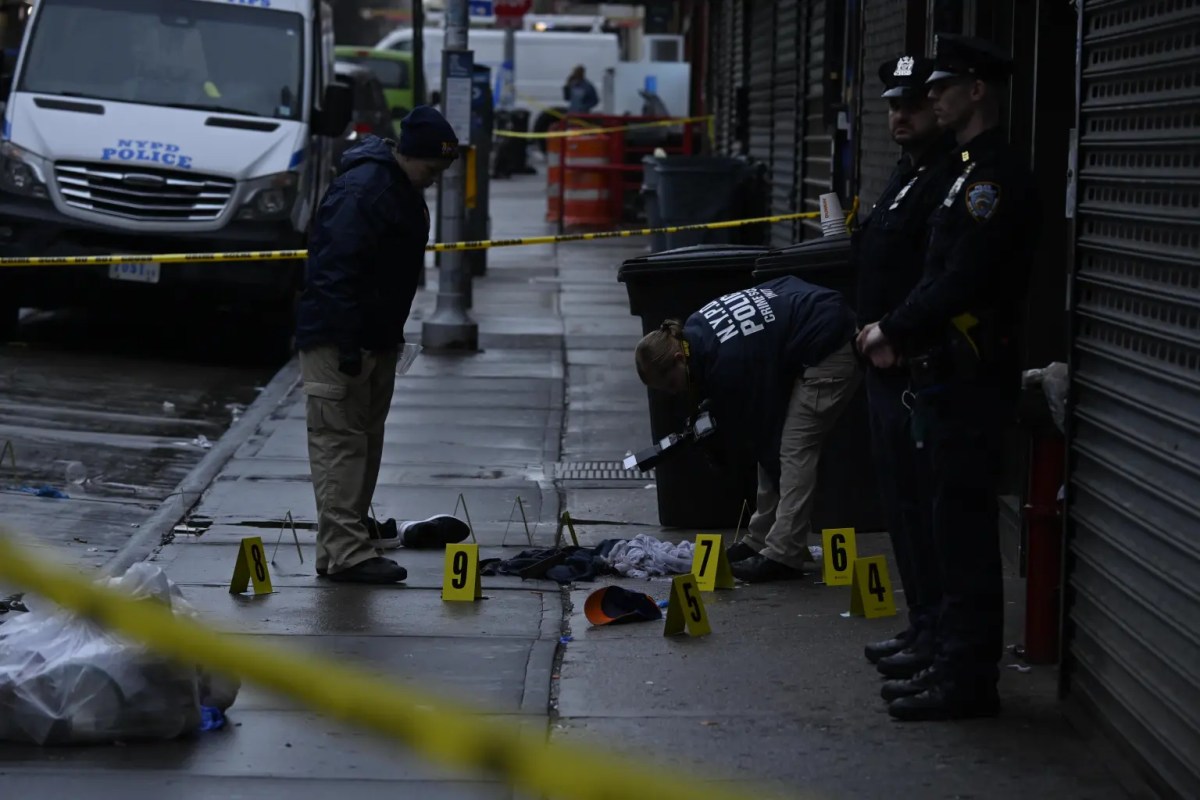
BY MICHAEL OSSORGUINE | At a recent hearing about a proposed development on Jane St., a real estate economist said, “We in the business of selling Manhattan properties think of the Landmarks Preservation Commission as a place where real estate dreams go to die.”
That claim certainly may be in dispute, however, as yet another heavy-handed development project on Gansevoort St. has been approved, and is well underway.
No. 69 Gansevoort St., which used to house the restaurants Florent and, briefly, Gansevoort 69, has been totally gutted by real estate developer DelShah Capital LLC, which bought the building and its air rights in 2013 for roughly $8.6 million.
According to three L.P.C. permits, the developer was granted permission to tear down the existing iconic storefront — made of stainless steel, glass and brick — in order to replace it with a similar facade. The developer also has approval to install HVAC (heating, ventilation and air conditioning) units at the rear of the roof, and make several interior alterations, including filling in windows on the rear wall.
“It’s a great facade,” Florent Morellet, longtime operator of the eponymous pioneering Meat Market restaurant, said. “One of the best in the neighborhood, and I took great care of it ever since I bought in in 1985.”
Some community members are outraged at what they charge were slapdash approvals for unattractive and inappropriate developments.
“Does the L.P.C. have no accountability to the community?” asked David Berry, who lives on Horatio St., in an e-mail to The Villager. “I’ve lived here for 43 years, and am watching the slow destruction of my neighborhood. I still can’t believe we lost the battle of ‘Gansevoort Row.’ ”
Earlier this summer, the L.P.C. approved a contentious application from Aurora Capital Associates and William Gottlieb Real Estate to raise the heights of some of the buildings on the stretch of Gansevoort St. between Ninth Ave. and Washington St. Two buildings — one with new rooftop additions, the other all new construction — will rise to 62 and 81 feet tall, respectively, even after being chopped down a bit by L.P.C. during its review process. The project was also O.K.’d to skirt pre-existing zoning restrictions, to create around 111,000 square feet of commercial space, much of which sat vacant in recent decades.
The prospect of yet more demolition and development in the Meatpacking District and Village has local activists saying they have to monitor L.P.C. even more closely to ensure it adheres to its own mandate.
“The permits for the work on the facade of this important building in the Meatpacking District require ‘reinstallation of the existing signage and face brick’ while repairs and restoration work is being done, as well as some additional signage added,” said Andrew Berman, executive director of the Greenwich Village Society for Historic Preservation. “It is therefore our expectation that much of those familiar details of the building will be restored and returned when the work is done. This type of work is commonly approved by the commission and can be an important means of keeping landmarked buildings in good condition.”
However, Berman said G.V.S.H.P. “will certainly not be shy” in expressing opinions on the reconstruction, and in ensuring that the facsimile — which some will no doubt deride as a “faux-cade” — recalls historical architecture.
The permits issued by the L.P.C. reference the building’s designation report as part of the Gansevoort Historic District. The report described it as a “Moderne-style restaurant and apartment building,” and the permit notes that the old “R&L Restaurant” sign had been present since its designation. However, the permits authorize the replacement of this sign.
The permits also state that photos of the ongoing restorations must be sent to the commission periodically to ensure that the developers are not violating the conditions of the approval.
Meanwhile, DelShah Capital LLC is happy to have acquired the space in 2013, seeing enormous potential for retail use at the spot, which is situated near the bustling southern entrance to the High Line park, as well as the new Whitney Museum of American Art. While the property’s air rights were being secured, they leased the space to a subsidiary of The Line Group to access income and pay for the $6.5 million loan they originally received from Berkadia Commercial Mortgage to finance the deal.
The former two-story building enclosed 2,950 square feet, and the lot has an additional 7,160 square feet classified as air rights. However, the developer reportedly will not be constructing a structure taller than the former building.
“Because this is in a historic district, transferring any air rights would be virtually impossible,” Berman noted.
Spokespersons for DelShah Capital LLC could not be reached for comment regarding the company’s plans.
John Berry, David’s brother, said they walked into the space behind the construction fence this June to discover that the entire building had been demolished. Afterward, David notified G.V.S.H.P.
“I was with him that day,” John said. “We observed that Florent was gone.”
Although he lives in Hawaii, John is frequently in the city and is spending this summer with his Village sibling.
“I used to eat there all the time,” he said of Florent. “What’s the point of landmarking the Meat Market, if they can do this?”
As for Morellet, he only noticed what was going on last week when he was riding by on a Citi Bike on his way to the Hudson River Park bike path and noticed the construction shed up around his former restaurant.
Morellet is unhappy that the authentic 1949 diner facade that he faithfully maintained through the years has not be preserved. Asked if he thought the new “faux-cade” would look anything like what was there before, he said with a sigh, “We’ll see.”

















